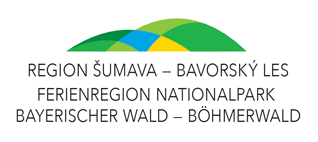10 – The Dlouhá Ves Raft Tying Station
Dlouhá Ves (Langendorf) was founded in 1290 in times of intensive gold panning on the Otava river. A certain Blajislav is mentioned as its owner and sources confirm other members of his family in Dlouhá Ves – Lipolt (1318) and Vojsa (1320), as well as the last member of the family line, Vitmar, who stayed in Dlouhá Ves between 1404–1413. Another known owner was Prokop Tomek from Čejkovy, who bought the estate probably in 1497 and his family occupied the local citadel until 1589, when Jan Čejka from Olbramovice on Němčice bought it from Jindřich Tomek. When Jan’s grandson Mikuláš Jetřich died, probably in 1650, it passed on to Jan Kašpar Hozlauer from Hozlau, but he sold it only two years later to Izabela Markéta Hýzralová from Slahausen. The Dlouhá Ves estate included a stone citadel with a trench and a drawbridge, a courtyard, a brewery, Dlouhá Ves and three other villages. Another mention of the citadel dates back to 1694, when it was bought by Jan Schafberger from Truberg and Johana, née Werner from Geyersberg from count Inocenc Ferdinand Buben from Litice. Three years later it was bought by Jan Jiří Schuman. In 1732, the Schuman house rebuilt the citadel into a chateau. During the following fifty years, the estate went into debt and in 1785 is bought by Michael Lazari. But financial difficulties kept piling up and the estate was auctioned in 1787 to Josef Enis from Atter.
In 1800 it was bought by the house of Schwarzenberg and connected to the Prášily estate. Around 25 semidetached houses were built to house Bavarian labourers (that is why they were called “Bavarian houses”) working in wood storage. This line of houses, named New Dlouhá Ves, was about 600 meters long and southwest of the original village.
At the end of the 19th century it had about 1000 inhabitants, in 1910 it was exactly 1247 people in 167 houses.
After buying Dlouhá Ves, the administration of the whole estate moved there from Prášily. A needle dam was built to catch the floated timber from the canal. Then it was dragged ashore and stored, dried and tied into rafts (It took three to four days for a raft to reach Prague from Dlouhá Ves, depending on the weather and water levels, the rafters then walked back for a week).
In 1800 it was bought by the house of Schwarzenberg and connected to the Prášily estate. Around 25 semidetached houses were built to house Bavarian labourers (that is why they were called “Bavarian houses”) working in wood storage. This line of houses, named New Dlouhá Ves, was about 600 meters long and southwest of the original village.
At the end of the 19th century it had about 1000 inhabitants, in 1910 it was exactly 1247 people in 167 houses.
After buying Dlouhá Ves, the administration of the whole estate moved there from Prášily. A needle dam was built to catch the floated timber from the canal. Then it was dragged ashore and stored, dried and tied into rafts (It took three to four days for a raft to reach Prague from Dlouhá Ves, depending on the weather and water levels, the rafters then walked back for a week).
Other artificial canals allowed for an easier manipulation with the wood. There was a tying station on the so-called Páteček (Little Friday), where a canal was leading out of Otava. The canal remains to this day and there is a hydroelectric power station on its upper end. Tying stations were places on the bank of the river, where logs were tied or retied together. The logs reached the station in various ways, for example via carriage, tractor, or horses. In some places the rafters cut the trees themselves – which made them woodworkers at the same time.
The House of Schwarzenberg owned the estate until 1930. After that the Dlouhá Ves chateau fell into disrepair, and even burned down. Its remains had to be torn down in 1949. In the 1960s the baroque barn from 1718 was torn down as well, as was the baroque Chapel of the Holy Cross built in 1732.
The House of Schwarzenberg owned the estate until 1930. After that the Dlouhá Ves chateau fell into disrepair, and even burned down. Its remains had to be torn down in 1949. In the 1960s the baroque barn from 1718 was torn down as well, as was the baroque Chapel of the Holy Cross built in 1732.

